
Hexen: Beyond Heretic is a fantasy first-person shooter video game developed by Raven Software and published by id Software distributed through GT Interactive on October 30, 1995. It is the sequel to 1994's Heretic, and the second game in Raven Software's "Serpent Riders" trilogy, which culminated with Hexen II. The title comes from the German noun Hexen, which means "witches", and/or the verb hexen, which means "to cast a spell". Game producer John Romero stated that a third, unreleased game in this series was to be called Hecatomb.
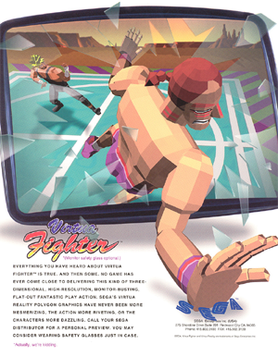
Virtua Fighter is a fighting game created for the Sega Model 1 arcade platform by AM2, a development group within Sega, headed by Yu Suzuki. An early prototype version was location tested in Japan by August 1993, before the complete game was released worldwide in December 1993. It is the first game in the Virtua Fighter series, and the first arcade fighting game to feature fully 3D polygon graphics. The game has been ported to several platforms including the Sega Saturn, Sega 32X, and Microsoft Windows.
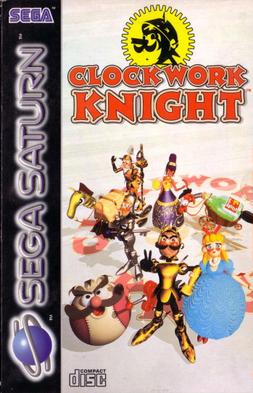
Clockwork Knight is a side-scrolling platform video game developed and published by Sega for the Sega Saturn. It was released in Japan in December 1994, in North America on the 1995 launch, and in Europe on July 8, 1995. Reviews were mixed, with critics praising the advanced graphics but criticizing the low difficulty, short length, and lack of gameplay innovation. It was followed by Clockwork Knight 2.
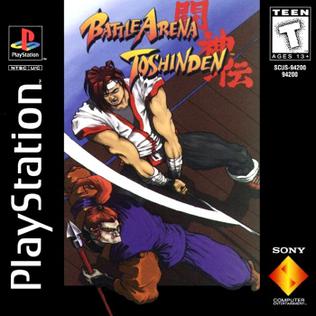
Battle Arena Toshinden, also transliterated Toh Shin Den, is a fighting video game developed by Tamsoft and published by Takara for the PlayStation. Originally released in 1995, it was released internationally by Sony Computer Entertainment, followed by 1996 ports for the Sega Saturn, Game Boy and MS-DOS. It was one of the first fighting games, after Virtua Fighter in 1993 on arcade and console, to boast polygonal characters in a 3D environment, and features a sidestep maneuver which is credited for taking the genre into "true 3D."

Castlevania: Dracula X is a 1995 platform video game developed and published by Konami for the Super Nintendo Entertainment System. It is the second Castlevania installment to be released for the Super NES. It is a remake of Castlevania: Rondo of Blood, which was previously released in Japan on the PC Engine Super CD-ROM2 in 1993. While the plot is similar to Rondo of Blood and it uses many of that game's graphics, it features new levels and altered gameplay elements, rather than being a direct port because of the limits of the Super NES cartridge format and exclusivity agreements with PC Engine maker NEC. It was released on July 21, 1995 in Japan, in September 1995 in North America, February 22, 1996 in Europe, and on June 22, 1996, in Australia. The game received mixed reviews, with critics considering it inferior to Rondo of Blood.

Corpse Killer is a horror-themed rail shooter developed and published by Digital Pictures for the Sega CD, Sega CD 32X, 3DO, Sega Saturn, Windows 95 and Macintosh computers. An interactive variation on the zombie film genre, it utilizes live-action full motion video in a format similar to other games developed by Digital Pictures. Reviews for the game were mixed, generally criticizing the repetitive gameplay and low video quality, though many reviewers enjoyed the campy nature of the cutscenes. Corpse Killer was the first CD game released for the Sega 32X. It was later remastered for Steam, PlayStation 4 and Nintendo Switch.
Gungriffon is a series of video games developed by Game Arts and designed by Takeshi Miyaji. Gungriffon and Gungriffon II originally appeared for the Sega Saturn console in 1996, with more recent appearances in Gungriffon Blaze for the PlayStation 2 and Gungriffon: Allied Strike for the Xbox. The Gungriffon games are focused on piloting mecha—large, usually bipedal military vehicles. This game series refers to these machines as Armored Walking Gun Systems (AWGS). With the exception of the High-MACS design, the mecha in this series have a distinctly realistic design philosophy.
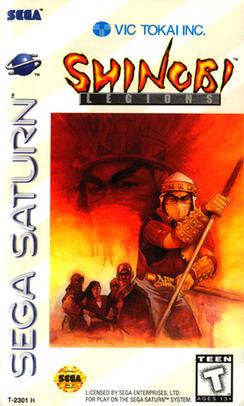
Shinobi Legions, known as Shinobi X in Europe and as Shin Shinobi Den in Japan, is an action game in the Shinobi series developed and published by Sega in 1995 for the Sega Saturn.

Mickey Mania: The Timeless Adventures of Mickey Mouse is a 1994 platform video game developed by Traveller's Tales and published by Sony Imagesoft for the Super NES, Sega Genesis, and Sega CD. In the game, the player controls Mickey Mouse, who must navigate through various side-scrolling levels, each designed and based on classical Mickey Mouse cartoons. The game was later released on the PlayStation in 1996 as Mickey's Wild Adventure in PAL regions by Sony Computer Entertainment, Sony Imagesoft's successor. A second game, Mickey Mania 2, was intended to be released but was cancelled due to Traveller's Tales focusing on other games.
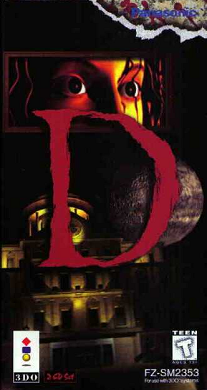
D is a horror-themed interactive movie and adventure game developed by Warp and directed by Kenji Eno. It was first published by Panasonic for the 3DO Interactive Multiplayer in 1995, later being ported to the Sega Saturn, PlayStation, and MS-DOS. The story follows Laura Harris as she goes to investigate a hospital after learning her father went on a mass murdering spree and barricaded himself inside. The hospital morphs into a castle upon her arrival, which she must explore to find her father. The player controls Laura through computer generated full-motion video (FMV) sequences, and must complete the game within two hours without a save or pause function.

Rapid Reload, known in Japan as Gunners Heaven (ガンナーズヘヴン), is a run and gun video game developed by Media.Vision and published by Sony Computer Entertainment for the PlayStation in both Japan and Europe in 1995. The game was re-released on the PlayStation Network in Japan in 2007 and in Asia in 2010.

Viewpoint is an isometric-scrolling shooter arcade game developed by Aicom and originally released in 1992 by Sammy and SNK for the Neo Geo hardware family. It was met with a highly positive critical response upon release for its cutting-edge visuals and hip hop-influenced soundtrack, though later ports for the Sega Genesis and Sony PlayStation saw much more mixed reviews.

Starblade is a 1991 3D rail shooter arcade game developed and published by Namco. Controlling the starfighter FX-01 "GeoSword" from a first-person perspective, the player is tasked with eliminating the Unknown Intelligent Mechanized Species (UIMS) before they wipe out Earth. Gameplay involves controlling a crosshair with a flight yoke stick and destroying enemies and their projectiles before they inflict damage on the player.

Mystaria: The Realms of Lore, released as Riglord Saga in Japan, is a tactical role-playing game for the Sega Saturn. In late 1996 it was re-released as Blazing Heroes in North America. Its graphics consist of pre-rendered sprites and polygonal backgrounds. Its sequel, Riglord Saga 2, was released in Japan only in 1996.

Robotica, also known as Robotica Cybernation Revolt in Europe and Deadalus (ダイダロス) in Japan, is a first-person shooter which was released for the Sega Saturn in 1995.

Tekken (鉄拳) is a fighting game developed and published by Namco. It was originally released for arcades in 1994, and ported to the PlayStation the following year. The game was well-received by critics. It is the first entry in the Tekken series, with a sequel, Tekken 2, being released in 1995.

Krazy Ivan is a mecha first-person shooter video game developed and published by Psygnosis. It was released for Windows, Sega Saturn and PlayStation in 1996.

Romance of the Three Kingdoms IV: Wall of Fire is the fourth in the Romance of the Three Kingdoms series of turn-based strategy games produced by Koei and based on the historical novel Romance of the Three Kingdoms. Romance of the Three Kingdoms IV: Wall of Fire was the last game in the series to be released on the PC in the United States until Romance of the Three Kingdoms XI. This was also the last Romance of the Three Kingdoms game to be released on the SNES.

Cyber Sled is a vehicular combat video game developed and published by Namco. It was originally released for arcades in 1993. The game's perspective is third-person by default, but can be switched to a first-person perspective. The game was nominated for Most Innovative New Technology at the 1994 AMOA Awards. It later received a sequel in 1994, Cyber Commando.
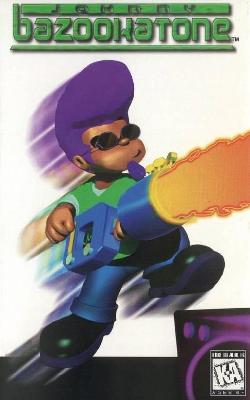
Johnny Bazookatone is a platforming video game developed by Arc Developments and published by U.S. Gold for the 3DO, PlayStation, Sega Saturn, and MS-DOS computers in 1996. Some releases also came equipped with a music CD based on the game's musical score. The game follows the protagonist, Johnny Bazookatone, trapped in the year 2050 in Sin Sin Prison by El Diablo, lord of the underworld. His guitar, known as "Anita" is taken from him, and so Johnny must travel to reclaim it.



















